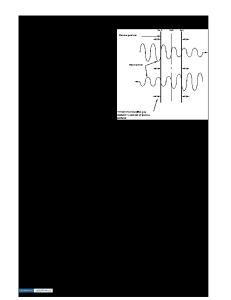Catalytic effects on carbon/carbon composites fabricated by a film boiling chemical vapor infiltration process
- PDF / 526,237 Bytes
- 10 Pages / 612 x 792 pts (letter) Page_size
- 8 Downloads / 377 Views
M. Monthioux CEMES/CNRS, 29, rue Jeanne Marvig, 31055 Toulouse Cedex 4, France
P. Delhae`s CRPP/CNRS, Avenue Dr Albert Schweitzer, 33600 Pessac, France (Received 1 October 2001; accepted 11 April 2002)
Chemical vapor infiltration (CVI) has been widely studied under several conditions to obtain C/C composites. A “film boiling technique” (so-called Kalamazoo), by the use of liquid precursor, based on thermal gradient CVI has been recently developed as one of the very effective techniques to increase the carbon yield and the densification rate. A small cold wall type laboratory reactor has been realized to analyze the kinetics of reactions and the deposited pyrocarbon matrix. In this study, ferrocene, as the source of catalyst, is mixed to the liquid precursor to induce a catalytic effect on the film boiling technique since the transition metals are known to increase the carbon deposition rate. In addition to an important increase of the densification rate, it is revealed that the deposition mechanism and microtextures are completely modified by the presence of catalyst, with the presence of multiwall nanotubes within the matrix. A model has been adapted from Allendorff and Hunt’s work to interpret this peculiar deposition mechanism.
I. INTRODUCTION
The C/C composites have been studied as very useful structural materials because of their thermal shock resistance due to high thermal conductivity and low thermal expansion, in addition to their mechanical properties such as high strength, toughness, and stiffness. To combine a porous fibrous preform with a carbon matrix acting as a binder between the fibres, the most widespread method to obtain the C/C composite is the isothermal chemical vapor infiltration (CVI) process. Gaseous hydrocarbons are used as precursors, which lead to the deposition of carbon matrix, in a competition between pyrolysis chemical reactions and diffusion of the chemical species inside the porous preform. Thermal gradient CVI processes using cold wall reactors overcome diffusion limitations and increase the infiltration rate, giving shorter processing times.1 More recently, a fast densification process, based on a film boiling technique and so-called “Kalamazoo,” has been developed.2 It is based on a very strong thermal gradient created—by inductive or resistive Joule effect—between the central part of the heated fibrous preform and its peripheral part immersed in the liquid hydrocarbon precursor. The well-known results for the deposited matrix are respectively a very high rate of densification with an 1904
http://journals.cambridge.org
J. Mater. Res., Vol. 17, No. 8, Aug 2002
Downloaded: 16 Mar 2015
improved carbon yield, a very low residual porosity, and a “good” matrix quality. The usual matrix microtextures are observed in specific anisotropic pyrocarbons, called smooth laminar and rough laminar; the second one, known for being graphitizable, is the most useful for applications.3 One effective factor to modify the deposition way and the infiltration kinetics of CVI is the catalytic effe
Data Loading...











